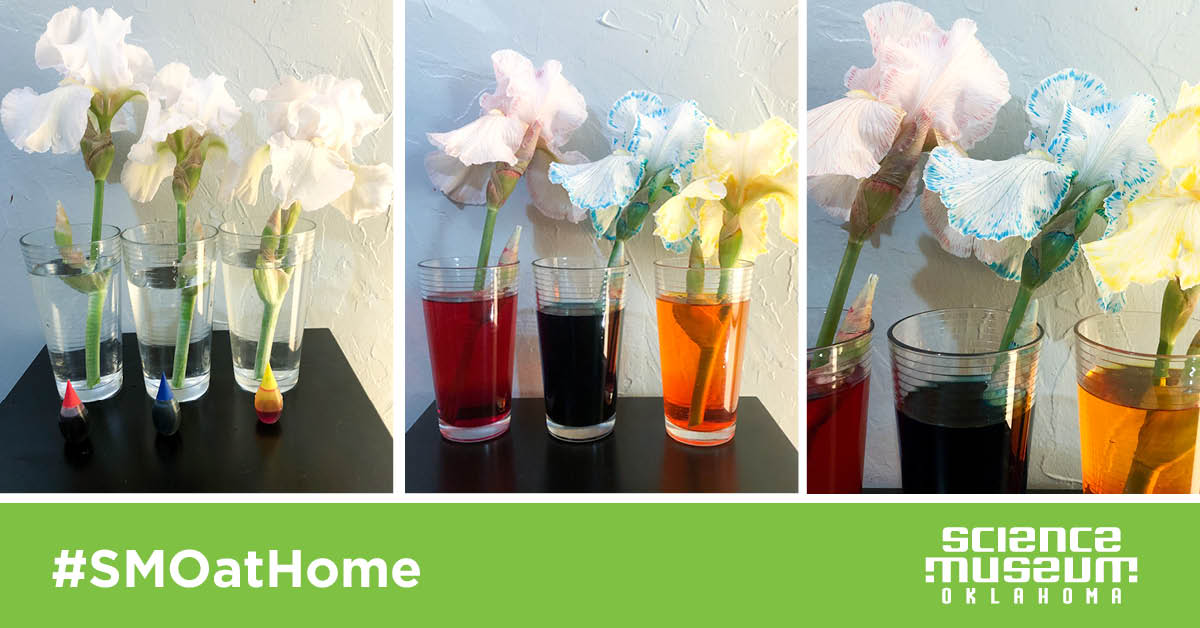Try This: Colorful Transpiration
Straws aren't getting much love these days. But there are some straws that deserve attention — xylem and phloem!

Xylem and phloem make up the vascular tissue in plants. Phloem carries vital sugars from photosynthesis to other areas of the plant. Xylem carries water and nutrients from the soil to the foliage of plants. In short, phloem are vessels that carry food from the plant’s leaves to the stem and roots where the food can be stored and used. Xylem carry water and essential minerals from the roots to the stem and leaves.
If you've ever cut or snapped the stem of a plant, you may have felt the liquid inside. Maybe you have noticed the plant wilt and its stem get dry. These are two ways to observe the vascular tissue of plants. Here’s another way:
Here’s what you need:
- Water
- A container
- Food coloring
- A white flower with stem (you could also use celery or white cabbage)
Here’s what to do:
1. Cut the stem of a white flowering plant, and place the flower with stem in a container.
2. Put a lot of food coloring into the water — when we say a lot, we mean 20 drops or more.
3. Wait and observe. You may notice a subtle change after an hour or two. You’ll need to wait at least 24 hours for best results.
What’s happening:
The xylem of the plant is essential for a process called transpiration, which describes the upward movement of water through a plant and its evaporation through the plant’s flowers, leaves, and stem. Transpiration is necessary to allow carbon dioxide to diffuse to allow for photosynthesis, to cool the plant, to deliver minerals to the plant and much more.
By adding food coloring to the water we’re able to see the path of this transpiration. As the water evaporates, part of the plant is stained by the food coloring and we are able to see the water’s path through transpiration.
Plants don’t have a heart that helps to move essential nutrients like animals do. Transpiration works through the adhesion and cohesion. Adhesion describes the water being attracted to the sides of the xylem. Cohesion refers to water being attracted to itself.
Go even further by examining the vascular tissue of trees:
You can further explore xylem and phloem by examining a tree. During the winter, scratch the bark of a tree. Do you see green? That’s the vascular tissue of the plant and a sign that the plant is still alive!
The vascular tissue producing xylem and phloem are responsible for making up the rings of a tree. A tree’s ring is made up of spring wood (blue line in the image) and autumn wood (red line in the image). These rings allow us to age the tree by counting each ring as one year’s growth.

These rings give other information too. A small ring may mean lack of rainfall, less available sunlight, fire, or insect damage.
Look at the below image of the tree cross-section. Notice that 2014’s ring is significantly smaller than 2015’s ring. The average rainfall for Oklahoma (where this tree was cut) shows an average rainfall for 2014 was only 22.49 inches but was 61.27” in 2015.

